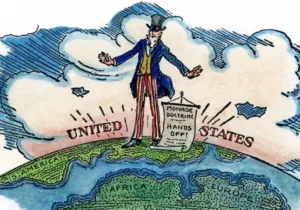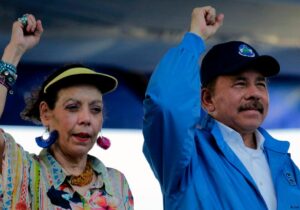“Strong, Secure, Engaged: Canada’s Defence Policy” (2017) is the first comprehensive Canadian defense review since 2008. The fruit of extensive collaboration and consultation, it explains that military spending will increase from $18.9 billion in 2016–17 to $32.7 billion in 2026–27, with a growth in personnel by about 3,500. Stated another way, total new defense spending will approach $48.9 billion on an accrual, $62.3 billion on a cash basis over the next 20 years. These increased commitments are to serve the tripartite thesis of a Canada “strong at home, its sovereignty well defended by a Canadian Armed Forces ready to assist…secure in North America, active in a renewed defence partnership with NORAD and with the United States; and engaged in the world, with the Canadian Armed Forces doing its part in Canada’s contributions to a more stable, peaceful world” (59, emphasis in original). Its implied thesis is that Canada can address emerging threats through a fusion of technological supremacy, neoliberal grand strategy, and enthusiastic multiculturalism.
Seven chapters and four summary appendices make for a defense review totaling 113 pages, and buried within is the admission (47) that Deloitte—a familiar name in Washington—was contracted to run the numbers. A close reading suggests three different institutional voices. First, the armed forces clearly contributed the various annotated lists pertaining to the new hardware and equipment the army, navy, and air force are to respectively receive as a result of the forthcoming expenditures, as well as the repeated expressions of “unwavering” (90) commitment to the North Atlantic Treaty, to the North American Aerospace Defense Command, and to the Five-Eyes intelligence network of Britain, America, Australia, New Zealand, and Canada. Somewhat unexpected amid these largely technological discussions is the strong commendation of drones, which “offer great potential in helping Canada meet its defence needs at home and abroad. They are important tools that help remove humans from dangerous situations” (73). Despite the vociferous concerns of human rights activists, drone technology is here regarded as a crucial tool for addressing emerging threats.
Meanwhile, the fourth chapter, “Global Context,” comprehends the most sustained discussions of Canadian grand strategy; and it reads as a very mainstream neoliberal globalism in the tradition of Robert Keohane’s After Hegemony (1984). The various discussions of the “evolving balance of power, the changing nature of conflict, and the rapid evolution of technology” (49) cover the theoretical terrain of increasing multi-polarity and interdependence combined with the decline of national autonomy and uniformity central to the graduate study of political science. Regional disturbances in Syria, Ukraine, and the Korean Peninsula are briefly discussed, and growing international disorder imputed to the destabilizing effects of climate change. Of note is the emerging challenge of Arctic diplomacy, which the Canadian government asserts will become increasingly salient as the ice retreats and the polar region becomes open to both commercial exploration and strategic competition.
Third, the document furnishes the reader a daytime dose of cultural Marxism throughout, most likely at the behest of the crusading prime minister’s office. Amid staged multicultural photographs on almost every other page, we are informed that some sort of “Diversity Champion” (23)—whether an officer, NCO, or civilian official is not explained—shall be appointed within the military to help oversee a “feminist approach to international policy” (55). A prominent instrument of this drive for inclusion shall be “Gender-Based Analysis Plus,” applied apparently even in combat to “assess the potential impacts of policies, programs, services, and other initiatives on diverse groups of people” (24). The military service of women as officers, NCOs, warrant officers, or enlisted is of course to be highly appreciated and fully commended; yet such politicization of the efforts of both the women and men in uniform is unnecessary and unfortunate. Such multiculturalism can also compromise threat assessment. In light of all that has passed since 9/11, let the reader carefully consider the following: “At home, Canada remains the target of direct threats by groups such as Daesh and al-Qaida, and by a small number of individuals inspired by the violent extremist ideologies of these groups… As part of a broader strategy, counter-radicalization efforts and meaningful community outreach will be essential to diminish the appeal that violent extremist ideologies have for a small number of individuals” (53, emphasis added). Based on this passage—and there are no others that pertain—Daesh or al-Qaida could just as well be Bolsheviks, Maoists, or Hindu nationalists for all the official attention paid to their worldview. The present Liberal government of Justin Trudeau simply will not utter the words Islamic, Islamist, or jihadist. At one level, such forbearance may help preserve precarious goodwill within a multicultural community, but at another it obstructs healthy public deliberation by reason of official refusal to acknowledge the obvious.
The overall impression of the most recent Canadian defense strategy is therefore perfectionist, functionalist, and meliorist. An inclusive and diverse military can preserve Canadian territorial integrity and respond to economic and environmental disturbances by employing the latest robotic technology. There is indeed enduring justification for the various organs of state to recruit from formerly marginalized groups, and validity to the notion that battlefield casualties can be reduced through astute reliance upon technological supremacy. But “Strong, Secure, Engaged” poorly develops these main ideas, resulting in a mediocre study unworthy of such a vitally important liberal society and democratic state.
—
Mark R. Royce, PhD, is a political scientist and international relations scholar, author of The Political Theology of European Integration: Comparing the Influence of Religious Histories on European Policies (Palgrave Macmillan, 2017). A founder of the Alexander Hamilton Society (2010–12), he was awarded (Oct. 10, 2017) an Associate Provost commendation for outstanding undergraduate teaching at George Mason University.
Photo Credit: An aircrew member on the CH-147 Chinook keeps a sharp eye out for any potential threats during a medical evacuation exercise in support of Operation PRESENCE – Mali around Gao, Mali on July 31, 2018. By MCpl Jennifer Kusche, Canadian Forces Combat Camera, Crown Copyright.





